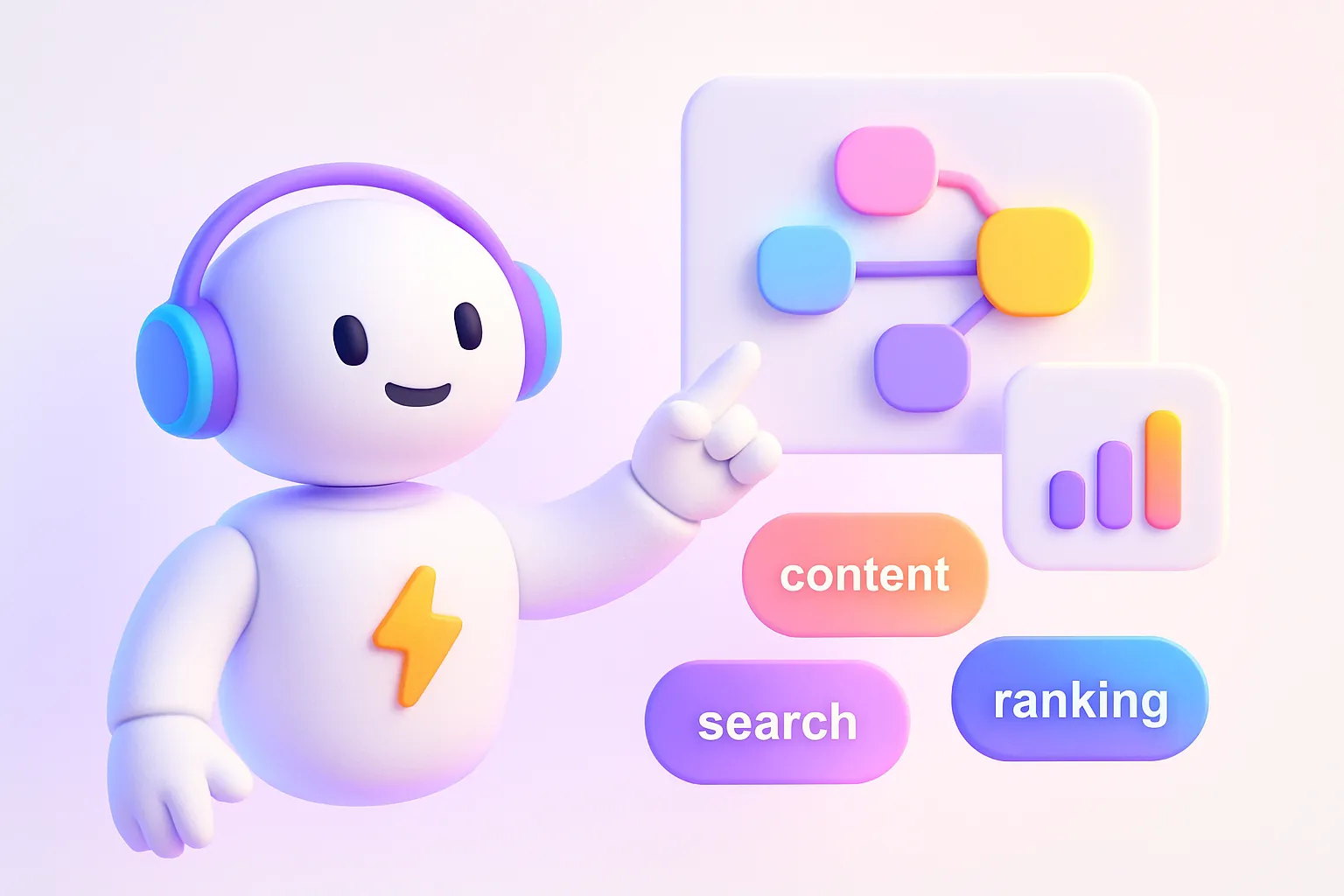Harnessing AI for Effective Keyword Clustering in SEO

Why AI Changed the Way We Cluster Keywords
Keyword clustering has been around for years, but the manual process never scaled. You had to download huge CSV files, play with pivot tables, and hope your gut instinct grouped phrases the same way Google sees them. AI flipped that workflow on its head. Modern algorithms scan live SERPs, measure semantic distance, and sort thousands of terms in minutes. According to research from SuiteJar, machines now find relationships humans miss, creating tighter clusters and saving hours of grunt work.
What Keyword Clustering Actually Means
Clustering groups search terms that chase the same intent or can be answered on a single page. If “best trail running shoes,” “top shoes for trail runners,” and “trail shoe reviews” all share overlapping SERP results, they belong together. Publishing one comprehensive article instead of three thin posts builds topical authority and avoids keyword cannibalization. Wikipedia’s definition is simple: segment your terms so each URL targets a clear theme.
Five Ways AI Makes Clustering Better
- Speed: Tools like Keyword Insights cluster up to 200,000 keywords at once using live country-specific SERP data source.
- Intent detection: Language models such as BERT label clusters as commercial, informational, or navigational, letting you map search intent to funnel stages source.
- Pattern recognition: AI considers lexical similarity and ranking overlap, producing groups that mirror Google’s understanding rather than superficial word matching.
- Self-improvement: Algorithms learn from new SERP snapshots, so clusters evolve with trending topics and seasonality source.
- Cost savings: Less manual sorting means your team spends more time crafting content and less time fiddling with spreadsheets.
Choosing an AI Tool and Setting It Up
You have dozens of platforms to pick from. The right choice depends on budget, dataset size, and how deep you want to go with SERP analysis.
Popular platforms
- Keyword Insights: Live SERP clustering plus metrics like average rank and search intent.
- SE Ranking Keyword Grouper: Simple interface, great for small to medium projects.
- Surfer SEO Content Planner: Bundles clustering with content outline generation.
Configuring your first project
- Export your keyword list from your favorite research tool.
- Upload the CSV to the AI platform and pick a similarity threshold. Lower thresholds create broader topics; higher thresholds create laser-focused silos.
- Review edge cases. Merge or split clusters when the AI gets fuzzy on intent.
- Export the finished report, including primary keyword, supporting phrases, and suggested URL structure.
Real-World Wins
An outdoor-gear ecommerce store reorganized its blog around AI-generated clusters and saw a 35 percent jump in organic traffic within six months case study. By combining “hiking backpacks,” “daypack sizes,” and “best backpack for day hikes” into one guide, they captured more long-tail queries and kept users on the page longer.
Best Practices to Keep Your Clusters Clean
- Refresh quarterly: SERPs change. Re-run clustering to catch new intent splits.
- Map clusters to content types: Product pages for transactional clusters, guides for informational ones.
- Internal link smartly: Link supporting articles back to your hub page with descriptive anchor text.
- Avoid over-segmentation: If two clusters share 70 percent of the same SERP, combine them to avoid thin content.
- Track performance: Monitor rankings and click-through rate to spot clusters that need a tweak.
Automating Large-Scale Workflows with conbase.ai
If you run enterprise-level sites or manage multiple clients, manual uploads become a bottleneck. conbase.ai processes up to 10,000 rows per project, turning raw keyword sheets into clean clusters, search-intent labels, and even draft content briefs in one pipeline. Drag-and-drop steps let you add sentiment analysis, append intent columns, and export formatted deliverables for writers. The visual builder means your SEO team can tweak prompts without touching code.
Related Reading: Leveraging AI for SEO Content Optimization
Our post Leveraging AI for SEO Content Optimization dives deeper into AI-powered keyword research, topic clustering, and predictive traffic scoring. Pair the techniques from that guide with the clustering workflow above to build a full-funnel SEO strategy.



